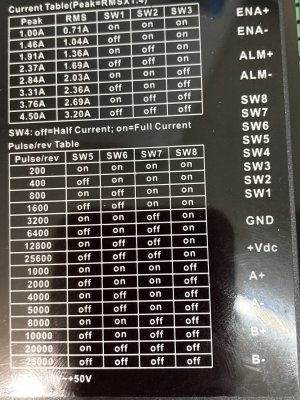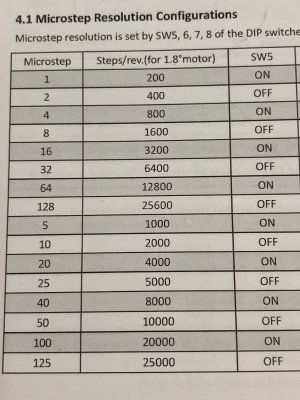- Joined
- Mar 12, 2022
- Messages
- 233
This isn't a question about CNC, but about stepper motors and how to control them, and I think most of the stepper experts are probably here.
Moderators: Please move this post if it's not an appropriate spot for it.
I'm putting powered X drive on my X2 mini-mill - "upgrading" from the cordless drill on the handwheel. I'm a complete novice with both the mill and stepper motors.
I'm a complete novice with both the mill and stepper motors.
It's a very simple plan - a DIY 555-based pulse generator connected to a DM542T stepper driver. The 555 generator has a pot for frequency control, with a fixed resistor over-ride for fast traversing of the table.
I've got the motor running. I still don't understand the settings on the driver and how to use them appropriately. To set the speed range for the motor, is it better to change the pulse/rev setting on the 542T (via the DIP switches) or to change the frequency range of the 555 circuit (by changing capacitor values) ? Or does it matter?
Moderators: Please move this post if it's not an appropriate spot for it.
I'm putting powered X drive on my X2 mini-mill - "upgrading" from the cordless drill on the handwheel.
It's a very simple plan - a DIY 555-based pulse generator connected to a DM542T stepper driver. The 555 generator has a pot for frequency control, with a fixed resistor over-ride for fast traversing of the table.
I've got the motor running. I still don't understand the settings on the driver and how to use them appropriately. To set the speed range for the motor, is it better to change the pulse/rev setting on the 542T (via the DIP switches) or to change the frequency range of the 555 circuit (by changing capacitor values) ? Or does it matter?


